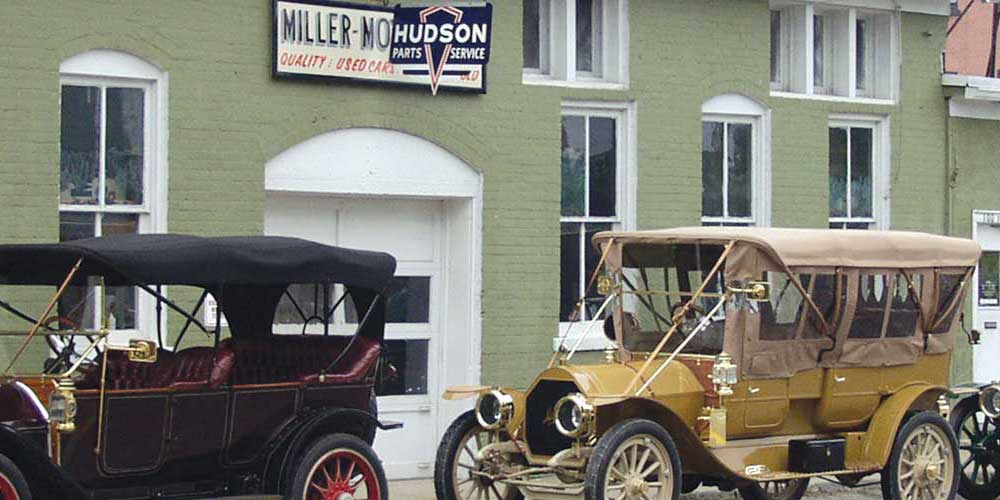By Robert Tate, Automotive Historian and Researcher
Images from the National Automotive History Collection and the Robert Tate Collection
Published 7.31.2019
Ford Motor Company was incorporated in 1903. Before 1908, Henry Ford announced that he would manufacture a vehicle large enough for a family to purchase at an affordable price. This model would also offer a regular operating maintenance cost for the consumer. He also said the vehicle would be made with the best materials and assembled by the best factory employees.
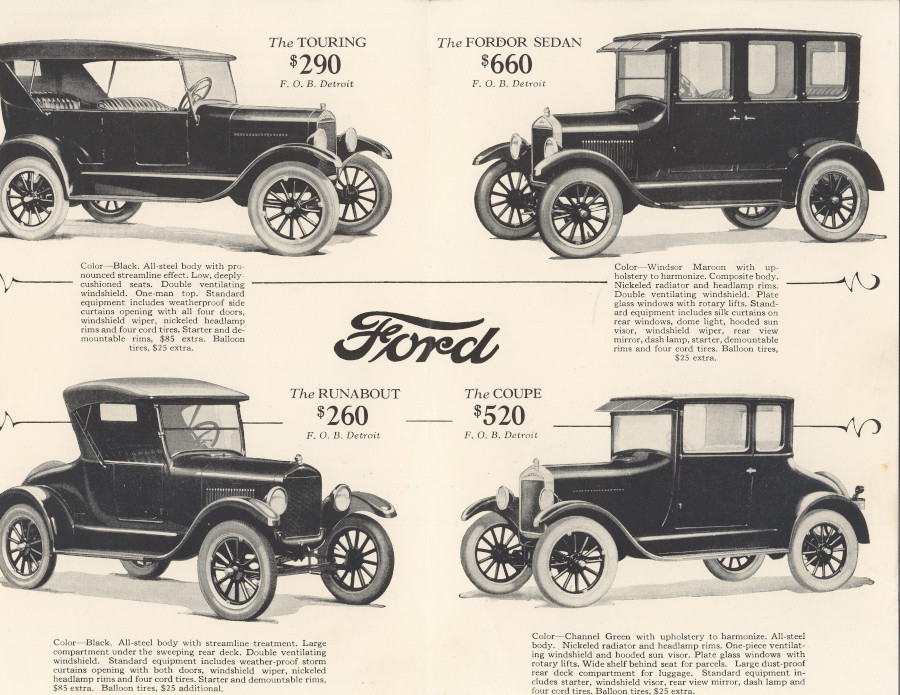 1924 Ford Model T brochure (National Automotive History Collection)
1924 Ford Model T brochure (National Automotive History Collection)
Some of the people involved with the Ford Model T at the beginning were Henry Ford, Childe Harold Willis, Joseph A Galamb and Eugene Farkus. The Ford Model T was a small, light weight vehicle that many customers admired and enjoyed.
From 1908 to 1927, the Ford Model T dominated sales in America. The price for a Model T Touring vehicle was $290 or $580 for the Tudor sedan. Drivers at the time could also enroll in a program called the “Ford Weekly Purchase Plan,” where the customer could make a deposit of five dollars at many authorized Ford Dealers across America to purchase a new Ford Model T.
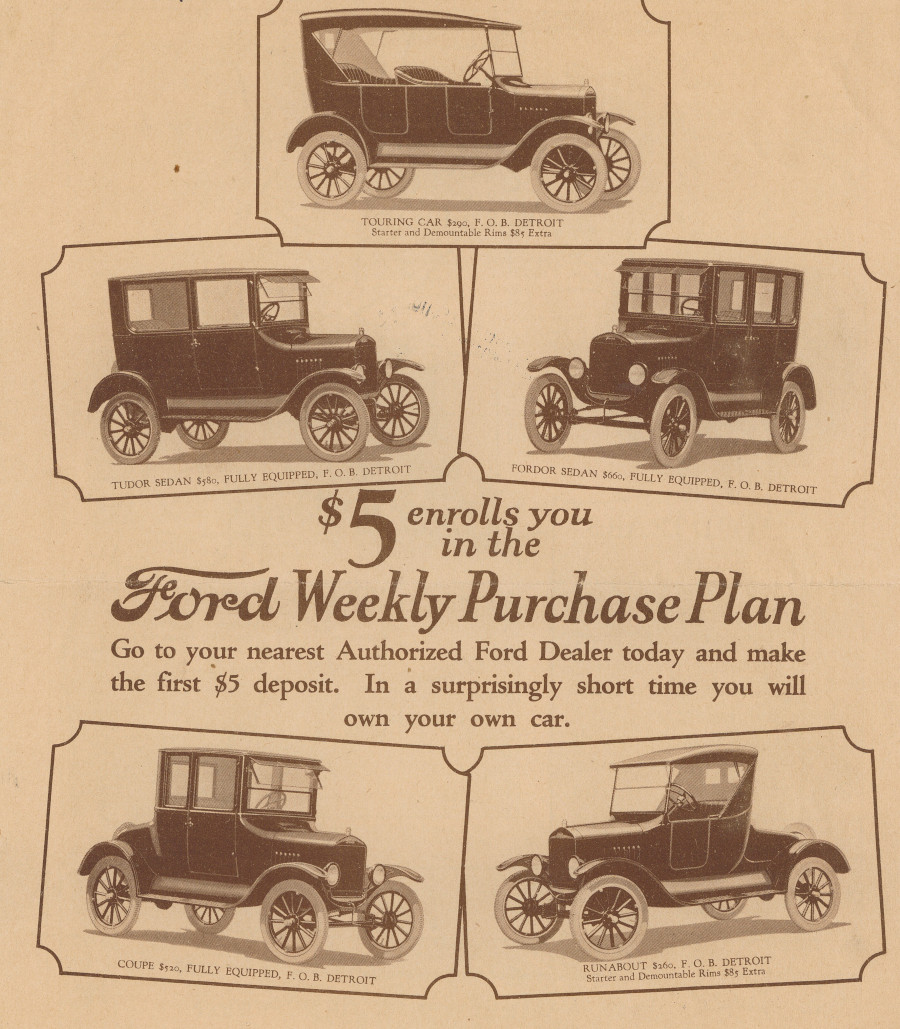 1925 Ford Model T 5 dollar plan (National Automotive History Collection)
1925 Ford Model T 5 dollar plan (National Automotive History Collection)
With seating capacity for five individuals and with low trim body lines, the Ford Model T combined beauty and utility for the customer. The Touring car had four doors that made it easier for passengers to enter and exit. The instrument panel inside provided the utmost convenience for the driver and passengers when traveling.
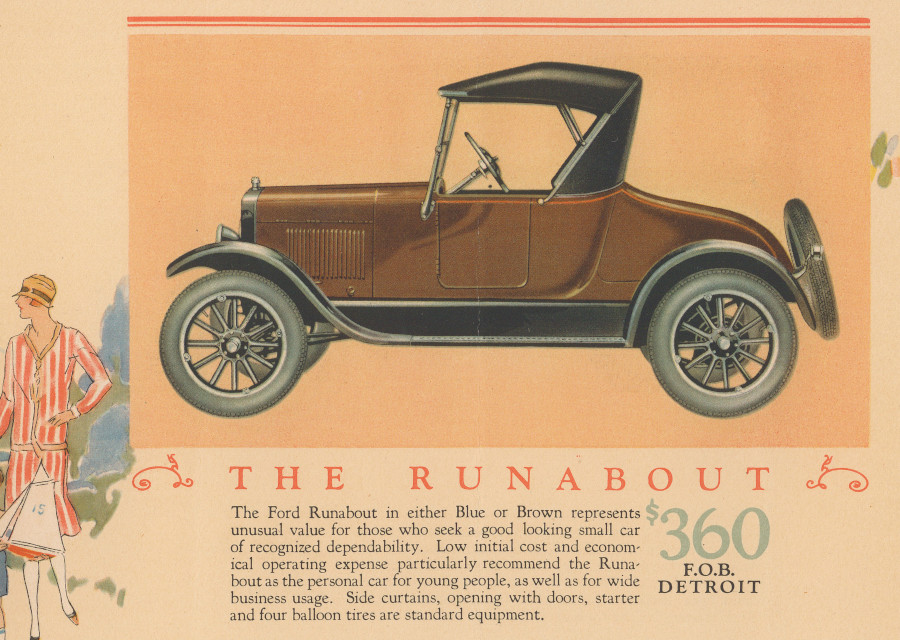 1926 Ford Model T brochure (National Automotive History Collection)
1926 Ford Model T brochure (National Automotive History Collection)
The radiator on all Model Ts introduced a great looking design. The radiator shells on closed vehicles and headlamp rims on all models were plated with polished nickel. The louvers had extended almost the length of the hood and could permit free circulation of air for the drivers and passengers. Windshield wipers were standard on all Ford vehicles.
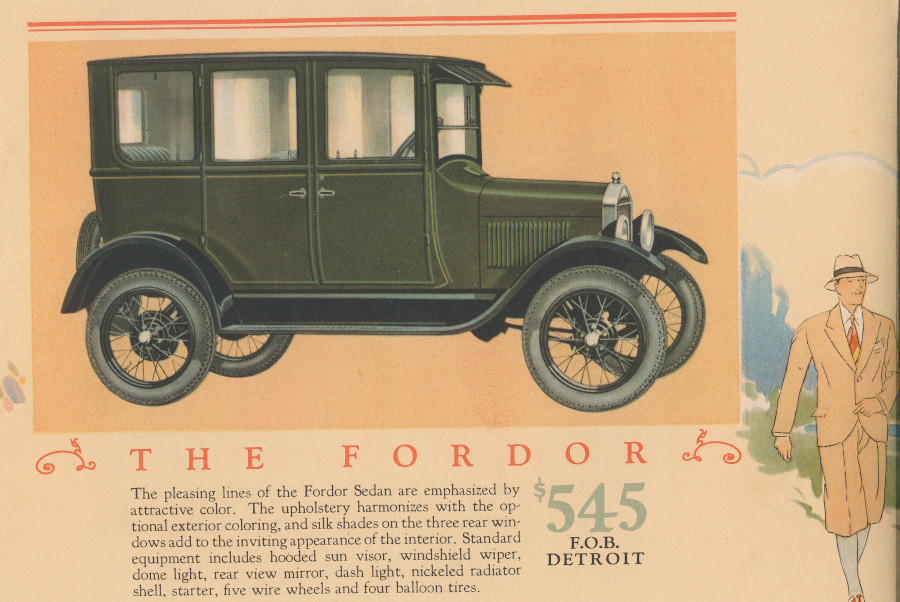 1926 Ford Model T (National Automotive History Collection)
1926 Ford Model T (National Automotive History Collection)
The Coupe was an exceptionally great looking car that could be used by men and women in business. The luggage compartment, which was located under the rear deck of the coupe, was dust free and waterproof. It had a capacity of 19 cubic feet of space.
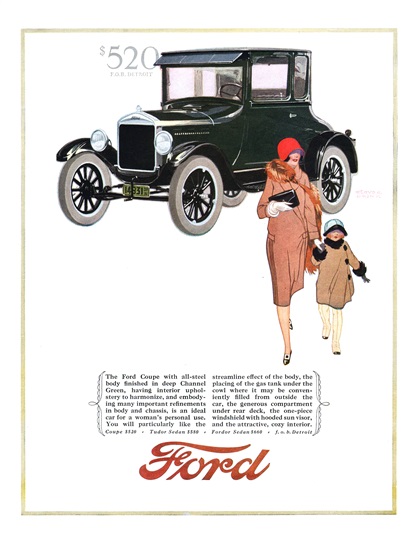 1926 Ford Model T Coupe Ad (Floyd Brink)
1926 Ford Model T Coupe Ad (Floyd Brink)
The Tudor Sedan was an ideal closed vehicle with room for five and was extremely economical to own and operate. Standard equipment included a hooded sun visor, windshield wipers, rear view mirror, dash light and a nickeled radiator shell.
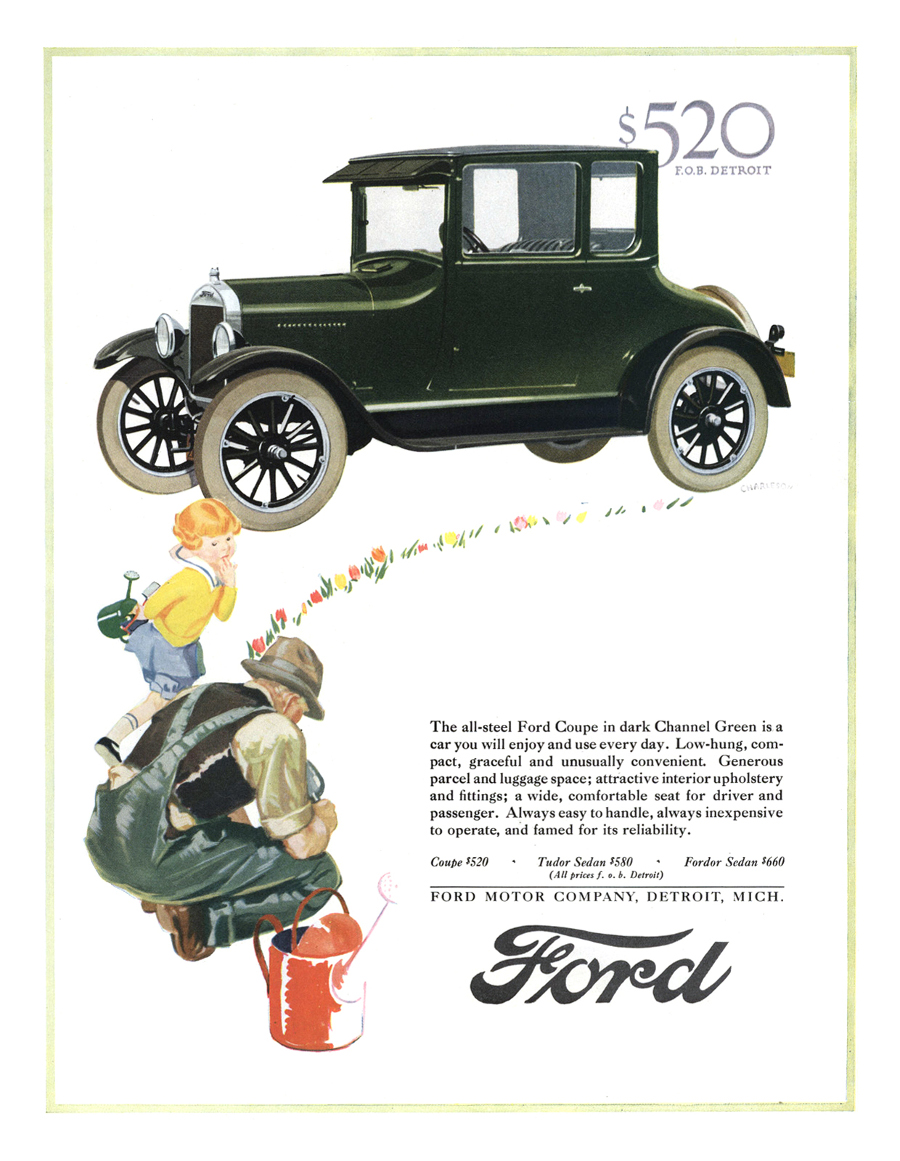 1926 Ford Model T Coupe Ad (Malcolm Daniel Charleson)
1926 Ford Model T Coupe Ad (Malcolm Daniel Charleson)
The Ford Runabout was also a great looking automobile. This model was fitted with storm curtains, a protection for all-weather driving. There also was a large rear compartment, which was very convenient for that extra luggage or business samples the driver would have. When the customer purchased a new Ford Model T, they knew it was an outstanding value.
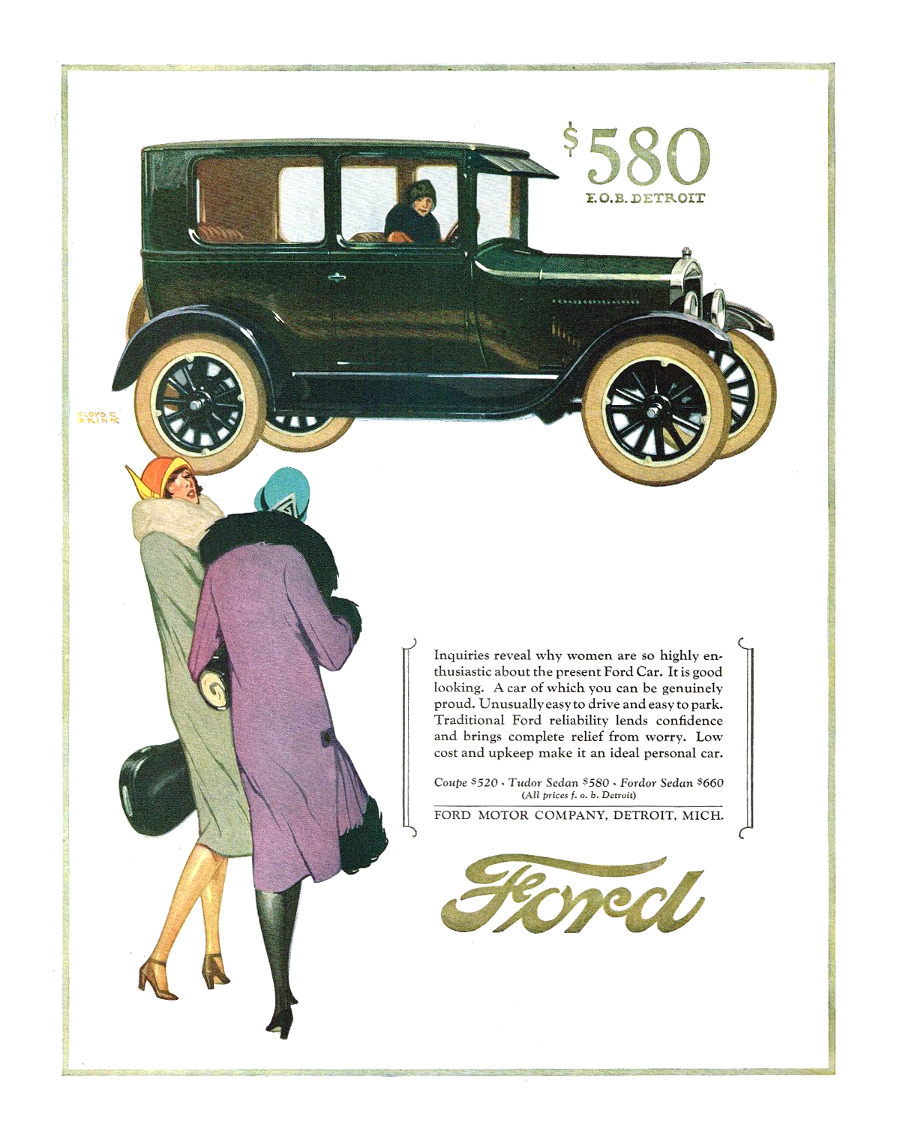 1926 Ford Model T Tudor Sedan Ad (Floyd Brink)
1926 Ford Model T Tudor Sedan Ad (Floyd Brink)
The Ford Model T, nicknamed the "Tin Lizzie," always had a great reputation as a very reliable automobile. Ford's vast Highland Park plant had an assembly line 850 feet long and a capacity to build 640 cars and trucks in eight hours when operating at full capacity. Only 41 minutes would elapse from the time the automotive frame went on the conveyor until the finished vehicle was driven away. The vehicles would leave the line at a rate of one every 45 seconds.
In conclusion, the first Model T rolled off the production line in 1908. After 19 years and more than 15 million vehicles, production ended on the Model T on May 26, 1927. The Ford Model T was named the most influential car of the 20th century.
MotorCIties' attraction partner, the Ford Piquette Avenue Plant, is celebrating the birthday of the Model T with a series of special events on Sunday, September 29, 2019. More details can be found here.
Bibliography
“Ford Final Assembly Line a Feature of Great Interest.” Ford Pictorial, June 1926.
Read Miller, Cynthia. “Advertising and the Image of the Model T Ford.” March 3, 1986.
Dammann, George H. “Illustrated History of Ford.” Crestline Publishing, 1970.
Kimes, Beverly Rae & Clark Jr., Henry Austin. “Standard Catalog of American Cars 1805-1942.” Krause Publications, 1987.


